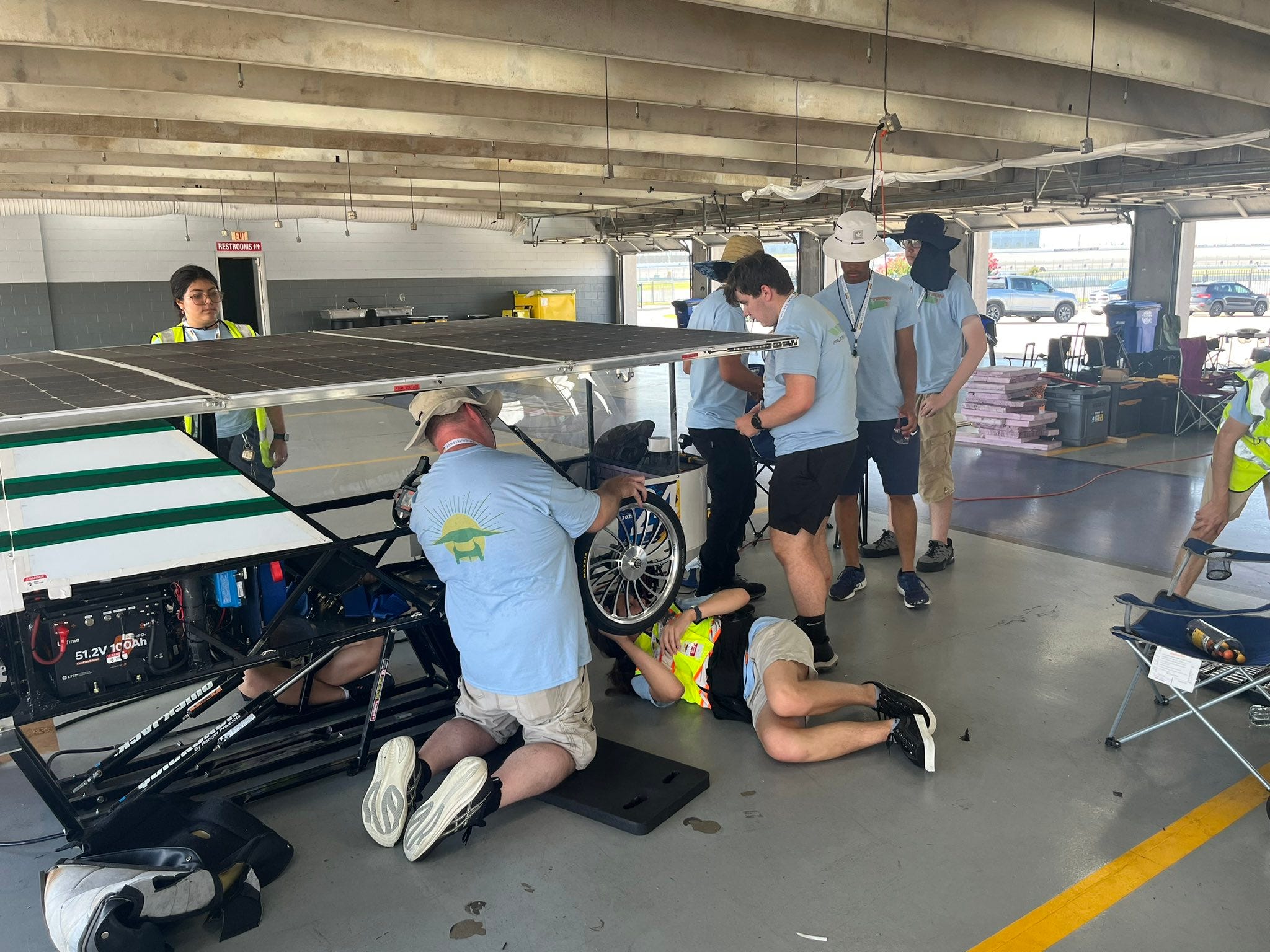Students Compete in Solar Car Challenge at Texas Motor Speedway
Students from across the United States have gathered at the Texas Motor Speedway for the annual “Solar Car Challenge.” This year’s event features 27 teams representing nine different states. Each team has spent months designing and constructing their solar-powered vehicles, which they then transported to the venue for the competition.
On Friday, teams underwent a critical process known as “scrutineering,” where judges carefully inspect each car to ensure it meets all the required specifications. This step is essential to confirm that all vehicles are safe, functional, and compliant with the rules set by the challenge organizers.
One of the team captains from Palmdale, California, shared insights into the challenges of building a solar car. “We have some limitations. We have variables we have to meet,” he explained. “We do a lot of research and find what we can do. We find panels that meet that maximum efficiency so we can pull as much wattage as we can.”
Many members of the team have been working together for several years, and they credit the experience with helping them explore potential career paths. “I feel like, at first, nobody really knows what they want to do. I know I didn’t,” one team member said. “But being involved in the program has really helped find what I want to do in the future.”
This student is now considering studying aerospace engineering in college, inspired by the aerodynamics involved in the design of the solar car. Another team member plans to pursue city planning, highlighting how the project has broadened his understanding of various aspects beyond just the technical design.
“The entire process has helped me learn other parts of the work besides just the design,” he added. “It’s a really good opportunity to build up communication skills not only on your team but with other teams that will help you.”
The Solar Car Challenge was founded in 1993 by Dr. Lehman Marks, with the goal of showcasing careers in science and engineering. Over the years, more than 85,000 students have participated, and many still keep in touch with the program. One former participant shared, “I never realized building a solar car would entail so much ‘un-engineering’ experiences in order to do this.”
Marks emphasizes that students gain valuable skills beyond just engineering. They learn how to communicate effectively, both within their own team and with others. They also develop an understanding of budgeting and practicality when it comes to design choices.
He also highlights the role of the challenge in introducing students to emerging technologies. As technology evolves, so does the competition. “In the last couple of years, we’ve moved from lead-acid batteries to lithium-iron phosphate,” Marks noted. “They’re lighter, cheaper, environmentally responsible, and can release energy more quickly.”
Marks describes the Solar Car Challenge as a “cooperation not a competition.” The teams work in large garages at the speedway, allowing them to learn from each other and collaborate on achieving new goals. “They have failures and successes. That’s just like life,” he said. “They learn how to pick themselves back up again and find other solutions.”
Scrutineering will continue through Saturday, with the main event beginning on Sunday at Texas Motor Speedway. The competition will run for four days, with the winner determined by the number of laps completed.
This event not only tests the students’ technical abilities but also fosters teamwork, problem-solving, and resilience. It serves as a powerful platform for young minds to explore the possibilities of science and engineering while gaining real-world experience.







